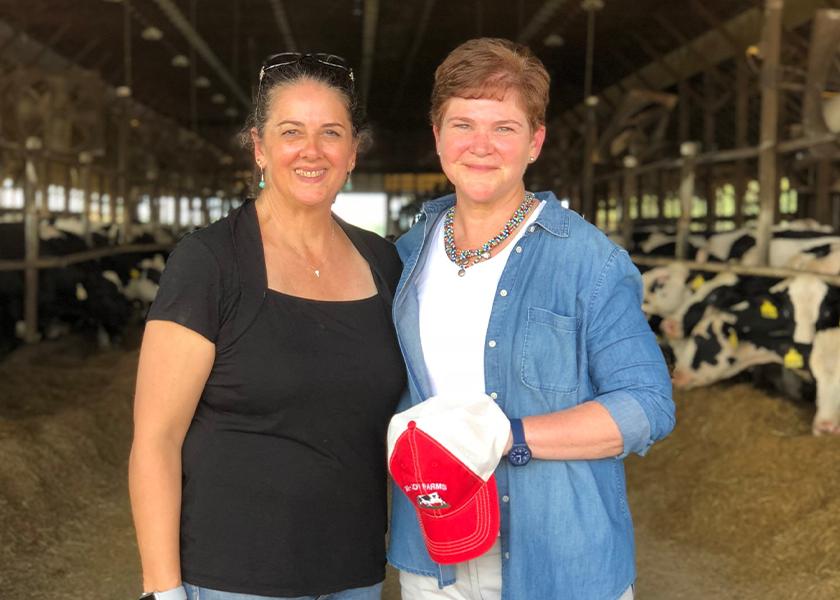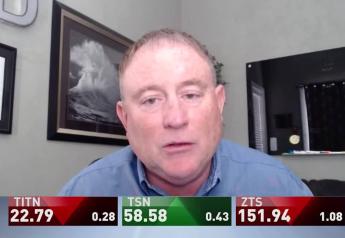One-on-One with U.S. Dairy Export Council’s CEO, Krysta Harden

After being in the new role as President and CEO of the U.S. Dairy Export Council (USDEC) for nearly two years now, Krysta Harden shares that even through the toughest of times, U.S. dairy exports grew, and she believes that number will continue to rise.
“We are pleased that we've been able to hold our own, even through COVID and shipping issues and through inflation recovery from COVID,” Harden says. “If we can do it in the toughest of times, then we can continue to grow exports anytime.”
Through the first three quarters of 2022, U.S. suppliers shipped 1.9 million metric tons of milk powders, cheese, whey products, lactose and butterfat, 4% more than the same period in 2021. The value of all U.S. dairy exports over the first nine months was $7.262 billion, 25% more than a year ago.
Through three quarters of 2022, total U.S. exports were equivalent to 17.9% of U.S. milk solids produced. Although Harden says she will be happy to reach another milestone.
“I’ll be excited when we get to 20%,” she says.
Hardens exclaims that she won’t stop there, and that ultimately dairy farmers must drive this.
“There's a lot of demand for U.S. dairy and so it's really making sure that we're meeting those needs and that were stepping up where there's an opportunity, and also creating new opportunities for high-value products and different products,” she says.
Still, Harden doesn’t dismiss the challenges that U.S. dairy has faced, including the ongoing struggle with supply chain issues. A challenge that tallied a $1.5 billion loss due to port challenges.
“Although I think we're certainly in a better place now,” she says. “I appreciate the administration's and the Congress's proactiveness in being able to pass and get signed the Ocean Shipping Reform Act. We've got to enforce that and we’ve got to address rail, trucking, labor and a host of other issues. The entire supply chain is something we have to invest in.”
Harden says there are some band-aids in place right now, which she is thankful for, but that the focus must remain on the need for improved infrastructure and commitment to the supply chain.
A Key Mission
In September, Harden accompanied a group of six U.S. dairy farmers to Chile, which she says was a key mission.
“I think it's very important that folks recognize how critical it is to have dairy farmers on the ground in our markets,” she says. “Chile is an emerging market for us and during COVID it was a market that was a surprise for us and the demand for U.S. cheeses.”
According to Harden, Chile has the largest GDP in South America and their consumers are sophisticated and like U.S. dairy products.
“Helping the importers understand the processors, and the retail outlets understand our industry and what motivates our farmers, is crucial,” she says.
The group met with Chilean processors and dairy farmers, talking about how they all can work together.
“We do believe that there's going to be more opportunity down there because of these kinds of relationships that build trust,” she says.
Message to U.S. Dairy Farmers
Harden says that it’s up to the dairy industry to take advantage of the opportunities that present themselves.
“The markets are there, the demand for our products is there,” she says. “We have to make sure that we're listening to what customers want around the world, helping them incorporate dairy into their cultural favorites. It's really up to the dairy farmer and the dairy industry on what we do with that demand. Because the demand is there, and it will continue to be there, and it will grow.”
Harden believes that the U.S. can move to be the largest exporter in the world.
“It’s not just because I’m competitive,” she says. “It’s because I know our products are that good. And we have a hungry world and a world that needs nourishing.”
Harden says U.S. dairy's role in helping feed and nourish the world is something we should take full advantage of.
“The opportunity is ours. The demand is there,” she says.







